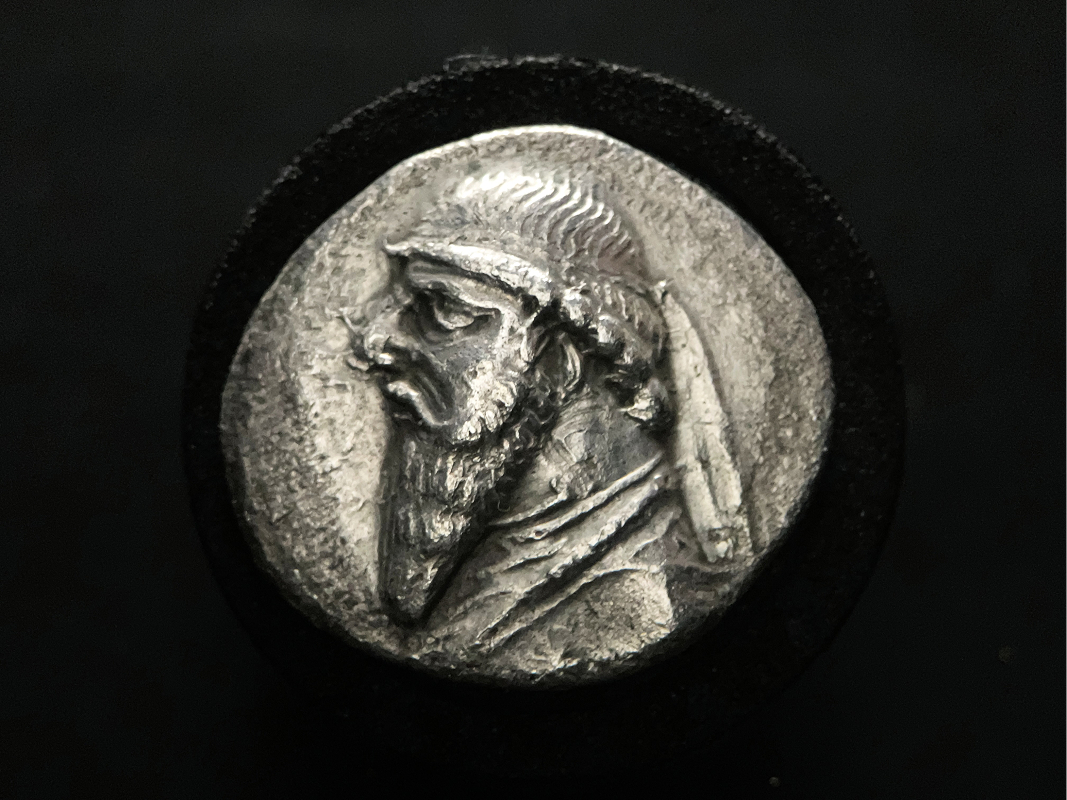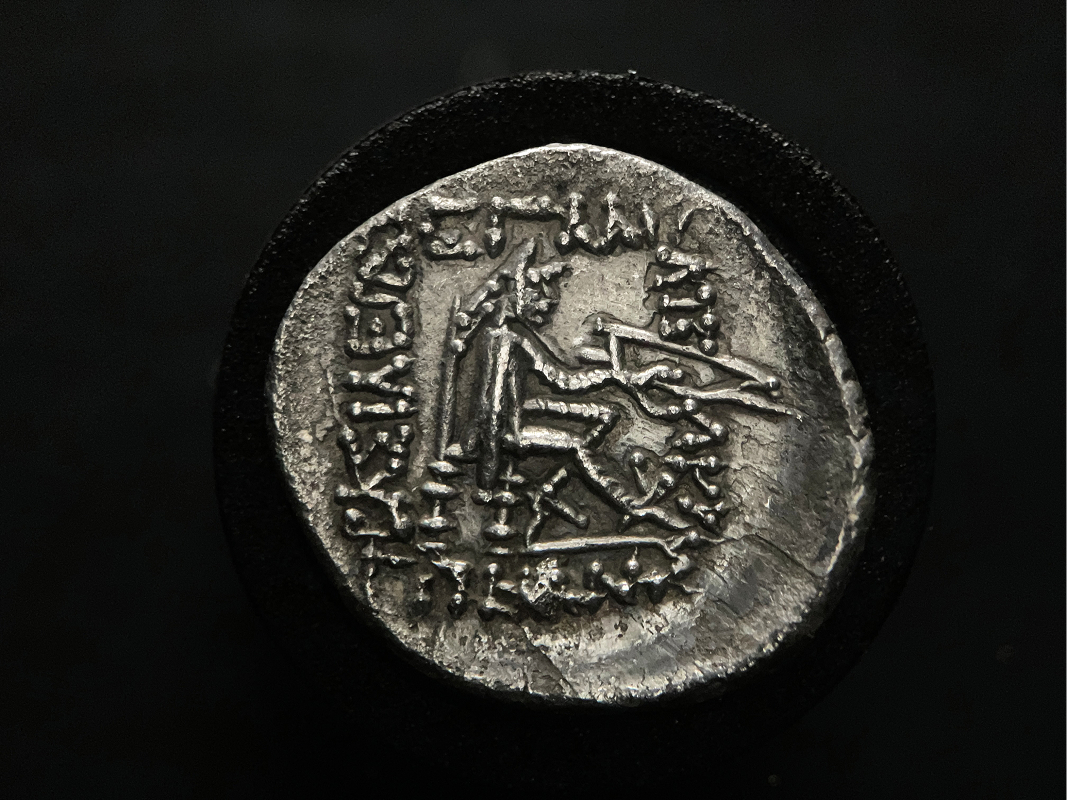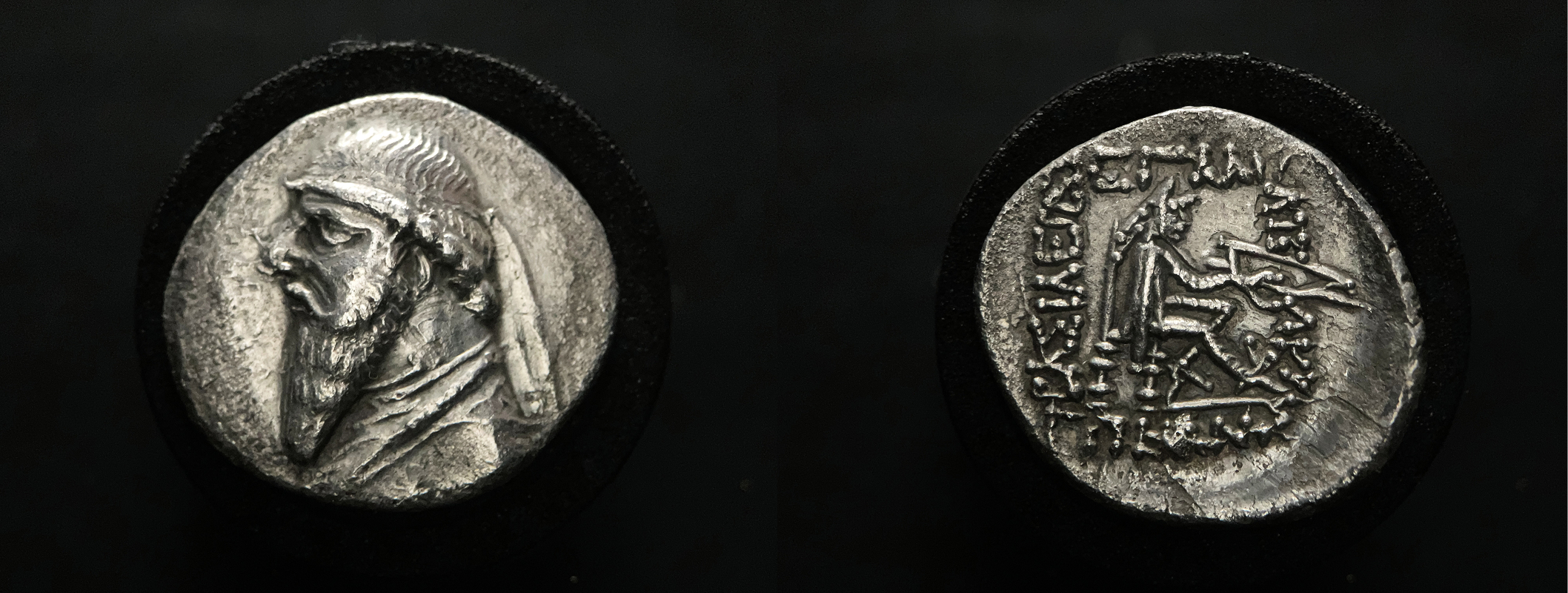Historical Context
Mithradates II (r. ca. 124–88 BC) is remembered as the “Great King” of the Parthian Empire, who solidified its political supremacy, expanded its borders, and made the Arsacid state a major diplomatic power.
This drachm was struck during one of his most influential periods (c. 120–109 BC), when Mithradates controlled key eastern and western trade routes and engaged diplomatically with both Rome and Han China.
Iconography Breakdown
Obverse
- Portrait: Bearded, diademed bust of Mithradates II facing left, wearing traditional Parthian tiara or bashlyk (with trailing ribbons).
- Details: High-arched nose, strong cheekbones, and pointed beard all follow established Arsacid artistic style.
- Symbolism: The tiara and facial features emphasize divine kingship and continuity with Achaemenid Persian tradition.


Reverse
- Design: Archer seated right on throne, holding bow horizontally.
- Inscriptions: Greek inscription surrounding the archer.
Typical Greek Legend on these coins:
ΒΑΣΙΛΕΩΣ ΜΕΓΑΛΟΥ ΑΡΣΑΚΟΥ ΦΙΛΕΛΛΗΝΟΣ
Translation: “Of Great King Arsakes, Friend of the Greeks”
- “ΒΑΣΙΛΕΩΣ ΜΕΓΑΛΟΥ” (“BASILEŌS MEGALOU”) – “Of the Great King”
- “ΑΡΣΑΚΟΥ” (“ARSAKOU”) – Referring to Arsaces, the founder of the dynasty
- “ΦΙΛΕΛΛΗΝΟΣ” (“PHILHELLĒNOS”) – “Friend of the Greeks”
This use of Greek language, despite the Parthians being Iranian, was a deliberate cultural and political choice to maintain continuity with Hellenistic rulers and appeal to bilingual populations across the former Seleucid Empire.
Greek Epigraphy & Cultural Messaging
Mithradates II was among the first Parthian rulers to consistently use the title “Philhellene” (“lover of the Greeks”), signaling a diplomatic shift that encouraged urban Hellenistic elites to view Arsacid rule favorably.
Greek inscriptions remained the standard for coin legends throughout most of the Parthian period due to their widespread intelligibility in the Seleucid successor states.
Numismatic & Technical Details
Ruler: Mithradates II (Parthian Empire)
Date: c. 120–109 BC
Mint: Likely Rhagae or Ekbatana (media not noted on flan)
Denomination: Drachm (Silver)
Weight: 4.00 g
Diameter: 18.90 mm
Orientation: 12h
Material: Silver
Reference: Sellwood Type 28.x (variant), BMC Parthia (cf. Plate IX)

